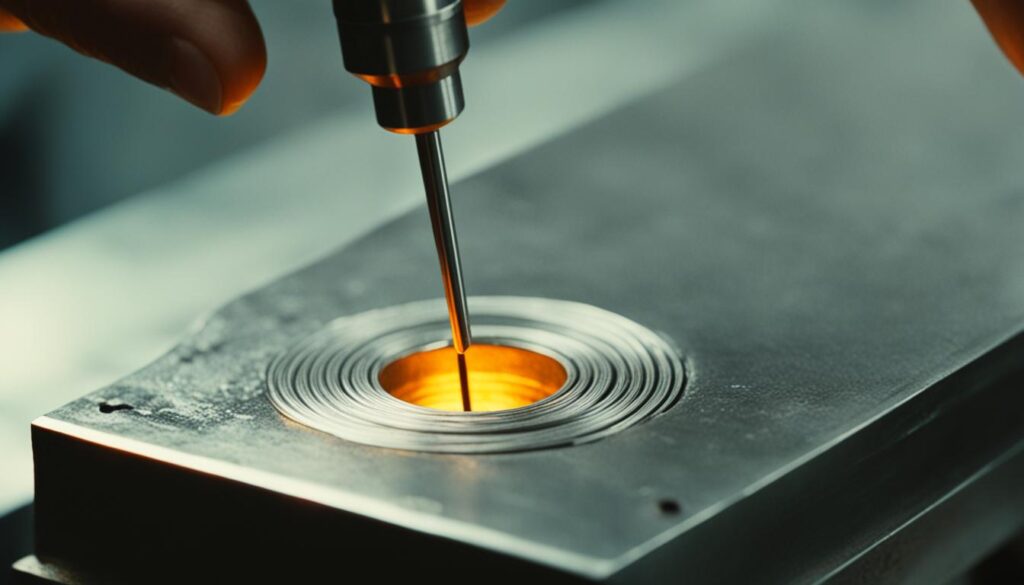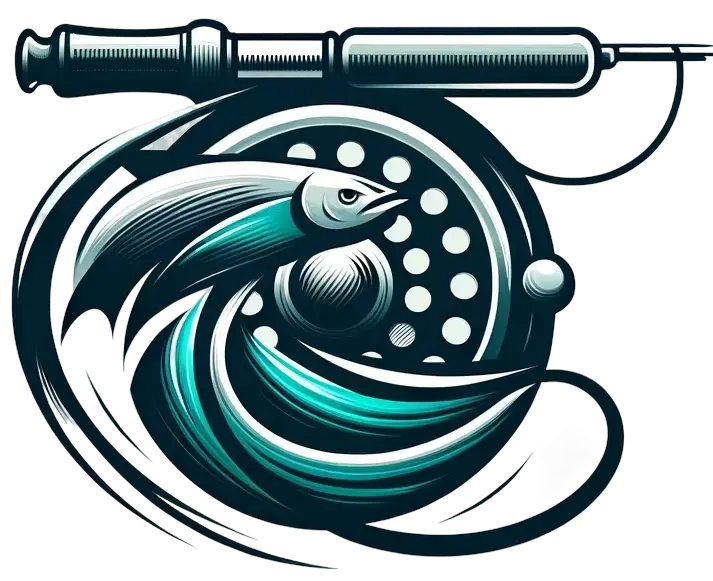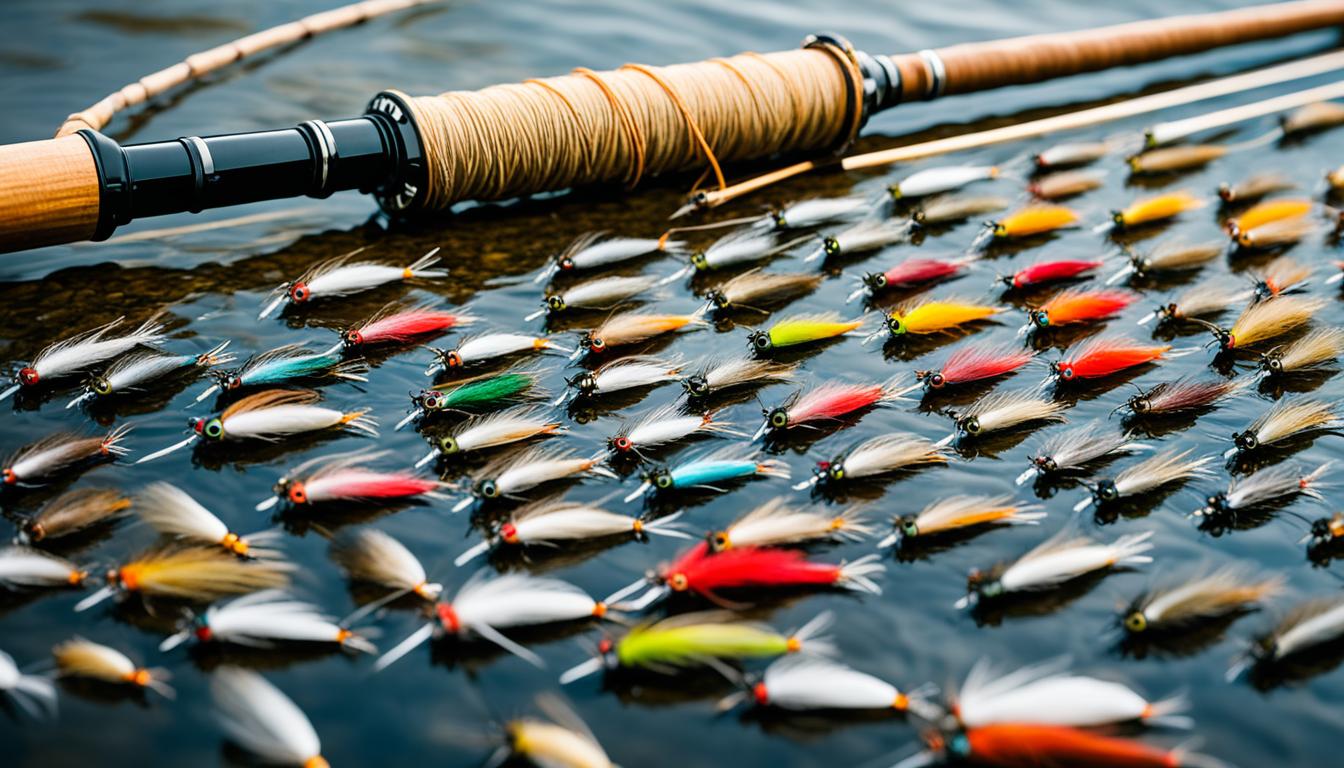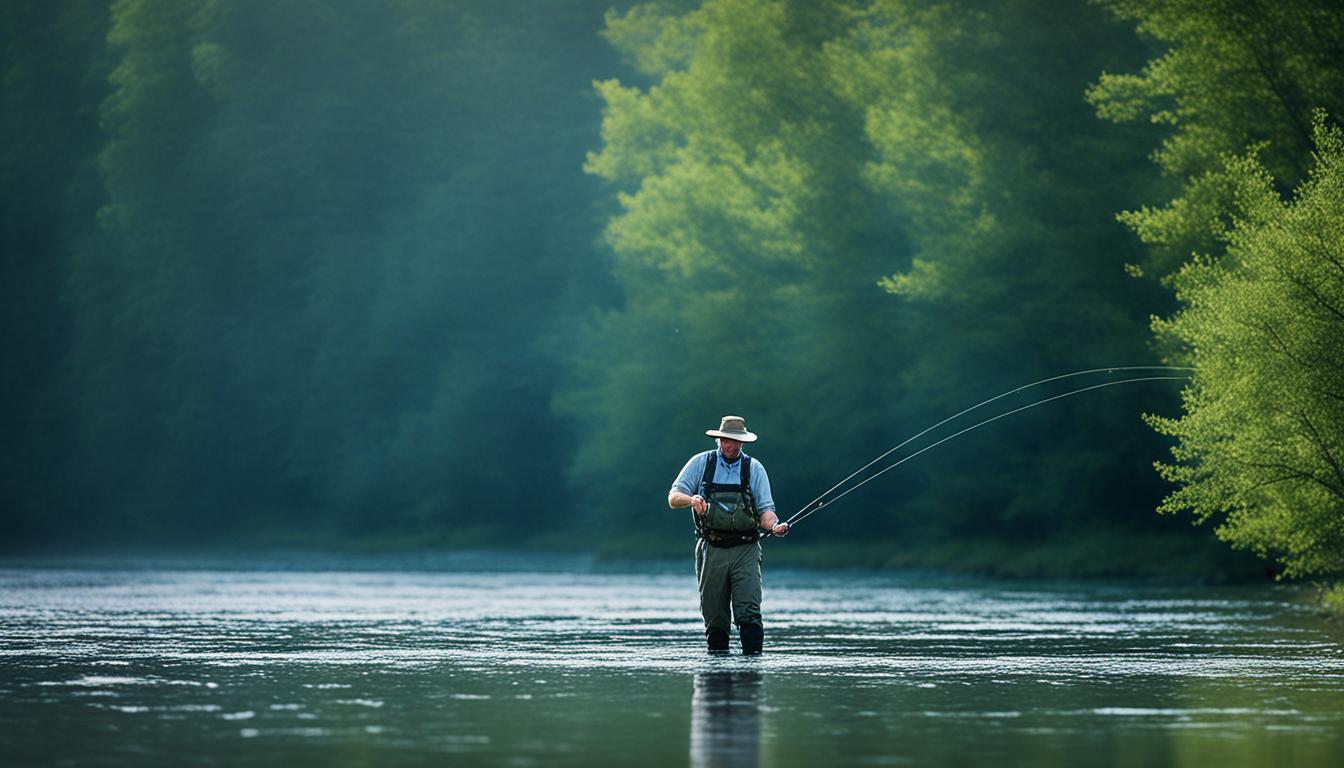Precision casting in tight spots requires accuracy and precision to achieve high-quality components with tight tolerances. It is a skill that not all anglers possess, but those who do have an advantage when it comes to tackling tough fishing situations. Accuracy in casting allows us to place our fly exactly where we want it, increasing our chances of catching fish in challenging areas such as under tree limbs or in narrow channels.
By mastering the techniques and strategies for precision casting in tight spots, we can greatly improve our success rates and increase the number of fish we catch. Whether it’s precision casting services or custom precision casting for specific needs, having the ability to cast accurately in tight spots opens doors to new fishing opportunities.
Key Takeaways:
- Precision casting in tight spots requires accuracy and precision for high-quality components with tight tolerances.
- Accurate casting allows anglers to place their fly precisely where they want it, increasing their chances of catching fish in challenging areas.
- Mastering precision casting techniques and strategies improves success rates and the number of fish caught.
- Precision casting services and custom precision casting offer solutions for specific fishing needs.
- Developing the ability to cast accurately in tight spots opens doors to new fishing opportunities.
The Importance of Accuracy in Precision Casting
Accuracy plays a vital role in precision casting in tight spots, enabling anglers to consistently place their fly in the desired location and increase their chances of attracting fish. Achieving accuracy in casting requires practice and the refinement of precision casting techniques. By honing their skills, anglers can enhance their casting accuracy and improve their success rates. Additionally, accurate casting helps prevent snagging on obstacles and ensures that the fly does not get caught in branches or other structures. Let’s explore the benefits of accuracy in casting and how it contributes to successful fishing experiences.
When it comes to precision casting in tight spots, accuracy is key. Accurate casts allow anglers to present their fly in the exact spot where fish are likely to be found. By honing their casting technique, anglers can consistently place their fly with precision and entice fish to strike. This is particularly important in challenging fishing conditions, such as narrow channels or under tree limbs, where accuracy is crucial to reach confined areas.
“Accurate casting allows anglers to increase their chances of attracting fish and getting strikes.”
One of the main benefits of accuracy in casting is the improved chances of attracting fish. When the fly is presented precisely where fish are holding, it appears more natural and enticing, increasing the likelihood of a strike. Accurate casting allows anglers to target specific areas and increase their catch rates.
Furthermore, accuracy in casting helps anglers avoid obstacles. By placing the fly accurately, anglers can navigate tight spots without getting snagged on branches, rocks, or other structures. This reduces frustration and ensures the fly remains in the desired presentation zone.
To illustrate the importance of accuracy in precision casting, let’s consider a table showcasing the benefits of achieving accuracy in casting:
| Benefits of Accuracy in Casting | Explanation |
|---|---|
| Increased catch rates | Accurate casting allows anglers to present their fly precisely where fish are likely to be, improving their chances of attracting fish and increasing catch rates. |
| Avoiding obstacles | Accurate casts help anglers avoid snags on branches, rocks, or other structures, ensuring the fly remains in the desired presentation zone. |
| Presentation accuracy | Accurate casting allows anglers to deliver the fly in tight spots, presenting it precisely where fish are holding, maximizing the chances of a strike. |
| Confidence in presentation | When anglers achieve accuracy in casting, they gain confidence in their presentation abilities, allowing them to fish more effectively and enjoy a greater sense of accomplishment. |
As the table demonstrates, accuracy in precision casting offers numerous benefits that contribute to successful fishing experiences. By practicing and refining casting techniques, anglers can improve their accuracy and increase their chances of catching fish in tight spots.
Now that we understand the importance of accuracy in precision casting, let’s delve into the techniques for improving casting accuracy in tight spots. These techniques will further enhance anglers’ abilities to place their fly precisely where they want it, maximizing their chances of success.
Techniques for Improving Casting Accuracy in Tight Spots
When it comes to precision casting in tight spots, anglers need to master techniques that enhance their accuracy. These techniques, combined with proper practice and adjustments, can significantly improve your casting abilities in challenging fishing conditions.
One fundamental technique for improving casting accuracy is focusing on the grip and hold of the fly rod. Ensuring that your hand is positioned correctly will give you maximum control and precision over your casts. By maintaining a stable grip, you can effectively target specific areas and achieve tighter placement.
Another valuable technique is casting with the tip of the rod. By carefully observing the movement and flex of the rod tip, you can guide the placement of your fly with better accuracy. This technique allows you to make subtle adjustments during the casting motion, optimizing your aim in tight spots.
In addition to these techniques, incorporating casting drills into your practice sessions can greatly enhance your accuracy. These drills help you refine your muscle memory, making your casting motions more precise and consistent. By dedicating time to practice specific casting scenarios in tight spots, you can sharpen your skills and adapt to challenging fishing conditions.
Sample Casting Practice Drill:
- Select a target area with a small opening or confined space.
- Set up markers or use natural reference points to simulate real fishing conditions.
- Practice casting into the target area from varying distances and angles.
- Focus on maintaining accuracy and minimizing line drag to achieve a natural presentation.
- Repeat the drill multiple times, gradually increasing the difficulty level.
- Monitor your progress and make adjustments to your technique as needed.
By incorporating these techniques and practicing casting drills regularly, you can improve your casting accuracy in tight spots. Remember to make necessary adjustments to your casting technique based on specific fishing conditions. With time and dedication, you’ll become proficient in precision casting and increase your success in challenging fishing situations.

The Role of Equipment in Precision Casting
When it comes to precision casting in tight spots, having the right equipment is essential. To achieve accurate and precise casts, anglers must carefully choose their fly rod, reel, and line. Let’s explore the important factors to consider.
Choosing the Right Fly Rod
When selecting a fly rod for tight spot casting, opt for a fast-action rod. This type of rod offers excellent sensitivity and control, allowing you to make precise casts even in challenging areas. Look for a rod that is designed specifically for tight spot casting, ensuring optimal performance in tight spaces.
Optimizing Your Reel and Line
Choosing a reel and line that complement your fly rod is crucial for achieving accuracy in casting. The reel should have a smooth drag system that allows you to easily adjust the line tension. This feature comes in handy when you need to make precise adjustments while casting in tight spots. Additionally, consider the weight and type of fly line that best suits your casting style and fishing conditions. Different lines offer varying levels of control and accuracy, so choose wisely.
Equipment Adjustments for Accuracy
Even with the right equipment, occasionally, adjustments may be necessary to ensure accurate and precise casts. For example, altering the weight of your fly line can help you achieve the desired casting distance and accuracy. Additionally, adjusting the reel drag can prevent overcasting and provide better control over your fly placement. Regularly assessing and fine-tuning your equipment will enable you to consistently achieve the accuracy needed for precision casting in tight spots.
With the right fly rod, reel, and line, and appropriate equipment adjustments, you’ll be well-equipped to tackle precision casting in tight spots. Remember, precision casting requires practice and skill, but with the right tools, you’ll have a significant advantage. Now, let’s move on to exploring effective strategies for casting in tight spots.
| Fly Rod | Reel | Fly Line |
|---|---|---|
| Fast-action rod with good sensitivity and control | Reel with a smooth drag system for easy adjustments | Choose the weight and type that suits your casting style and fishing conditions |
| Designed for tight spot casting | Complements the fly rod for optimal performance | Provides control and accuracy |
Strategies for Casting in Tight Spots
Casting in tight spots requires anglers to employ specific strategies to effectively reach their target areas. One strategy is to read the water and identify the best casting lanes or seams where fish are likely to be hiding. This allows anglers to make targeted casts and increase their chances of getting strikes.
When reading the water, look for signs such as ripples or subtle movements that indicate the presence of fish. Pay attention to the flow of the water and use it to your advantage when planning your cast. By understanding the patterns and characteristics of the water, you can position yourself in the optimal spot for precision casting.
Another effective tactic is to use different casting techniques that work well in tight spots. Roll casts are particularly useful when there are obstacles obstructing your backcast. By directing the line and fly along the water’s surface without a traditional backcast, you can navigate around trees, bushes, or other structures that might hinder a regular overhead cast.
Sidearm casts are also effective in tight spots because they allow you to cast horizontally, keeping your fly line closer to the water and reducing the chances of snagging on overhanging branches or other obstructions. Sidearm casts offer greater accuracy and control in confined spaces, making them a valuable tool for precision casting.
As you approach a tight spot, be aware of your surroundings and adjust your casting technique accordingly. Casting under low-hanging branches or between narrow channels requires finesse and the ability to position your fly with accuracy. By honing your casting skills and using these strategic tactics, you can effectively reach tight spots and increase your chances of enticing fish to bite.
Fly Casting Strategies for Tight Spots
| Strategy | Description |
|---|---|
| Reading Water | Identify casting lanes and seams where fish are likely to be hiding. |
| Roll Casts | Navigate around obstacles by directing the line along the water’s surface without a backcast. |
| Sidearm Casts | Cast horizontally to keep the fly line closer to the water and avoid snagging on overhanging branches. |
Practicing and Refining Precision Casting Skills
Like any skill, precision casting in tight spots requires practice and refinement. At [brand name], we understand the importance of honing your casting abilities to achieve exceptional accuracy and improve your overall fishing performance. In this section, we will provide you with valuable tips and techniques to practice and refine your precision casting skills.
Casting Drills for Precision
One effective way to enhance your precision casting skills is to incorporate casting drills into your practice routine. These drills focus on specific aspects of your technique, such as accuracy and distance, allowing you to fine-tune your casting abilities.
Tip: Set up targets or markers at different distances and practice hitting them consistently with your casts. This drill helps you develop muscle memory and improve your accuracy.
Here is an example of a casting drill for precision:
| Distance | Targets |
|---|---|
| 20 feet | Small hoop or hoop target |
| 40 feet | Bucket or large ring target |
| 60 feet | Flag or flagpole |
Casting Practice Tips
Aside from casting drills, there are other practice tips that can help you improve your precision casting. Consider the following:
- Practice regularly: Dedicate time to practice your casting technique consistently. Regular practice allows you to refine your skills and develop muscle memory, leading to better accuracy.
- Vary your casting conditions: Practice in different environments and fishing scenarios to prepare yourself for various casting challenges. This helps you become adaptable and confident in tight spots.
- Seek feedback: Don’t hesitate to seek guidance from experienced anglers or instructors. Their feedback can provide valuable insights and help you identify areas for improvement.
“Practice makes perfect. By dedicating time to practice and continuously refining your casting technique, you can become proficient in precision casting in tight spots.”
Remember that each practice session brings you one step closer to mastering precision casting. Enjoy the process and stay committed to your goal of improving accuracy through practice.

We hope that the tips and techniques provided in this section will help you advance your precision casting skills. In the next section, we will delve into the role of equipment in precision casting and discuss how choosing the right gear can further enhance your accuracy and overall fishing performance.
Conclusion
Precision casting in tight spots is a skill that can greatly enhance an angler’s success on the water. By mastering the techniques and strategies for accuracy, we can consistently place our fly in the exact location needed to entice strikes from even the most challenging fish. Achieving accuracy in tight spot casting requires the right equipment and regular practice, but the rewards are well worth the effort.
Improving our casting skills through precision casting techniques allows us to confidently navigate challenging fishing situations, such as casting under tree limbs or into narrow channels. With practice, we can develop the muscle memory needed to consistently hit our desired targets and avoid obstacles. The precision casting experience becomes a seamless and natural part of our fishing repertoire, leading to increased success rates.
To achieve mastery in precision casting, it’s important to invest in the right equipment. Choosing the suitable fly rod, reel, and line for tight spot casting is crucial. The right combination of equipment ensures optimal performance and control, enabling us to make accurate and precise casts. Regular practice drills, coupled with equipment adjustments when necessary, help us refine our casting skills and achieve the desired accuracy to excel in tight spot casting situations.
By dedicating ourselves to mastering precision casting techniques, improving our casting skills, and utilizing the right equipment, we can achieve success in tight spot casting. With practice, patience, and persistence, precision casting becomes second nature, allowing us to consistently fish in challenging areas and enjoy the thrill of hooking more fish. So let us embrace the art of precision casting and open up a whole new world of angling possibilities.
FAQ
What is precision casting in tight spots?
Precision casting in tight spots refers to the technique of accurately placing a fly or lure in challenging fishing areas, such as under tree limbs or in narrow channels, using precise casting skills.
Why is accuracy important in precision casting?
Accuracy is crucial in precision casting as it allows anglers to consistently place their fly in the desired location, increasing their chances of attracting fish and avoiding obstacles or structures that can lead to snagging or entanglement.
How can I improve my casting accuracy in tight spots?
Techniques for improving casting accuracy in tight spots include focusing on proper grip and hand positioning, casting with the tip of the rod, practicing casting drills, and making necessary adjustments to your casting technique.
What equipment do I need for precision casting in tight spots?
To achieve precision casting in tight spots, it is essential to choose a fly rod that is suited for the specific fishing conditions and techniques you will be using. A fast-action rod with good sensitivity and control is often preferred. You may also need to make adjustments to your reel and fly line to achieve optimal performance.
What strategies can I use for casting in tight spots?
Strategies for casting in tight spots include reading the water to identify the best casting lanes or seams, using different casting tactics like roll casts or sidearm casts to navigate obstacles, and making targeted casts to increase your chances of getting strikes.
How can I practice and refine my precision casting skills?
You can practice and refine your precision casting skills by setting up casting drills, focusing on specific aspects of your technique, seeking feedback and guidance from experienced anglers or instructors, and dedicating regular time to practice.
What are the benefits of mastering precision casting in tight spots?
Mastering precision casting in tight spots allows anglers to consistently place their fly in the desired location, increasing their chances of catching fish in challenging fishing conditions and enjoying greater success on the water.




